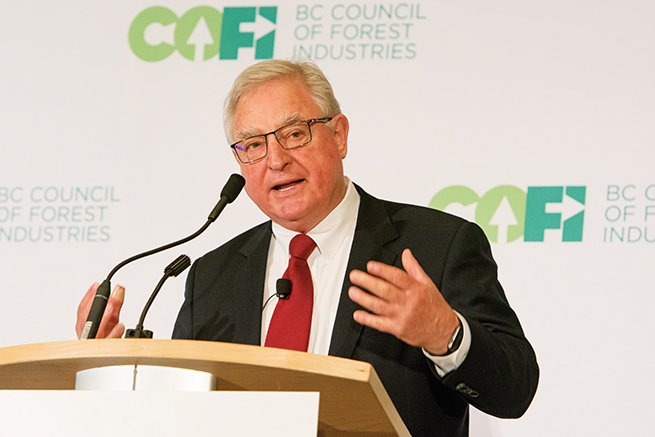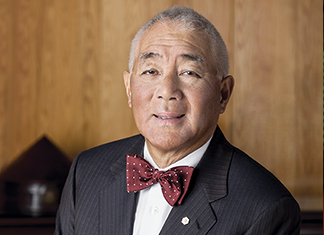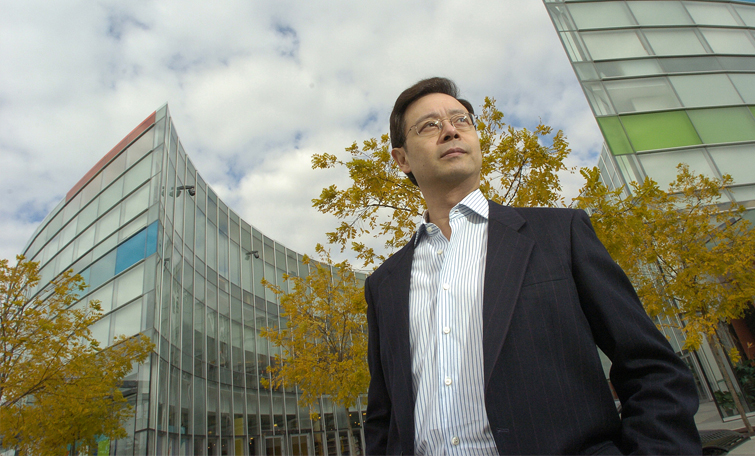Softwood Lumber Dispute between Canada and the U.S.
- Caifu Magazine | by Millie Lou
- EN
At the 2017 BC Council of Forest Industries (COFI) Convention in April, David Emerson -- the former Canadian trade minister instrumental in ending the last softwood lumber conflict -- told a crowd of industry insiders that the softwood lumber dispute with the United States is like a “mutating form of bacteria that has become all but antibiotic resistant.” Essentially, the 30-year-old dispute is over the Americans claim that Canadians have an advantage for selling government subsidized-lumber into the U.S. marketplace.

The 2006 negotiated agreement expired in 2015; however, the two countries have yet to reach an agreement. Instead, the U.S. is imposing duties on Canadian softwood lumber this year. Kirsten Hillman, the Assistant Deputy Minister of Global Affairs Canada, told the crowd at the convention that the trade team under the Trump administration was not established yet. As a result, Canada cannot begin negotiations at the officials’ level. She is confident Canada’s position is strong. “Analysis suggests that the gap between the U.S. [softwood lumber] demand and supply will increase over the next decade,” she said. “We are the best place to meet that demand.” Canada traditionally supplied about 30 percent of the wood used in the U.S.
“As governments, we don’t always succeed [in negotiations],” she cautioned. “What we can do is try to set the best possible terms.” In the meantime, she recognized the difficulty that the Canadian industry is facing. “The U.S. industry wants to constrain Canadian softwood exports and based on this desire, it has led to artificial barriers to trade. Those artificial barriers have led to cycles of litigation, [which] cause pain, damage and loss until we are able to negotiate again.”
Since Canadians have been facing U.S. lumber trade actions since 1981, this challenge that the industry is currently experiencing did not come as a surprise. The industry has taken many steps in anticipation of a situation like today. Don Kayne, Canfor’s CEO, detailed how Canfor prepared for this: “Going back seven or eight years ago, we were on a concerted effort to really diversify our business. We focused on ensuring the mills we have in B.C. and Alberta were top quartile on a cost competitive standpoint. We expanded into the U.S. We built a huge footprint down there -- about 30 percent of our production. That was to lessen our dependency on the U.S. because of the expected [duties]. The third thing we did was to diversify our markets. We were 90 percent relying on the U.S. around 2007. Today we are about 55 percent [reliant].”
Despite Canfor and the industry’s valiant efforts, impacts from the trade action will inevitably be felt throughout the industry. “The biggest impact is on our customers because of the volatility of prices,” Kayne said. “When customers look at Western Canada, they see us as reliable and sustainable suppliers. However, unwarranted trade action impacts the reliability, the volatility and prices going forward. All we can do is keep competitive, continue developing our markets everywhere, including the U.S. The U.S. is an important market for us -- it’s the biggest market.”















